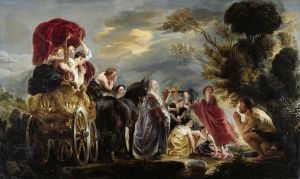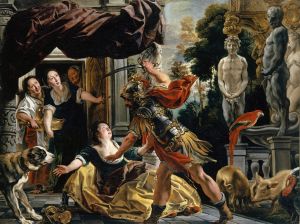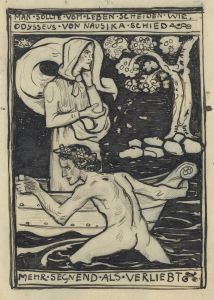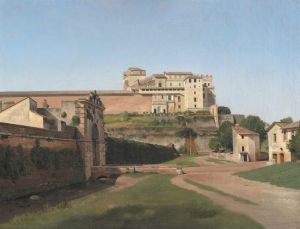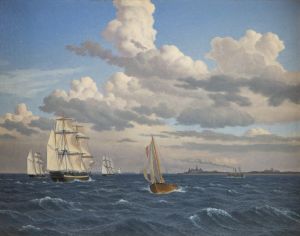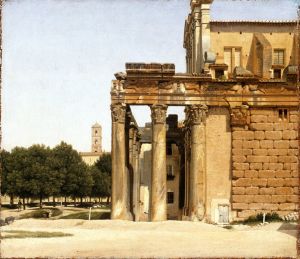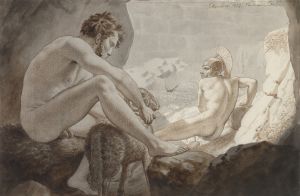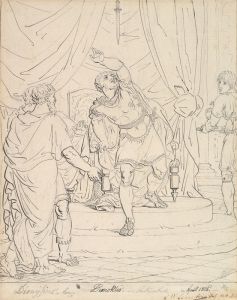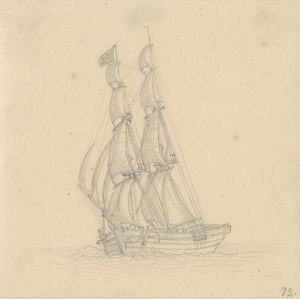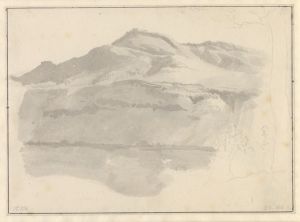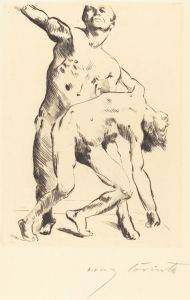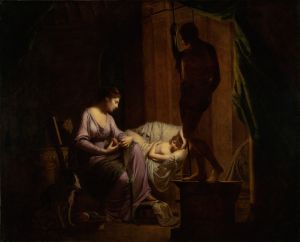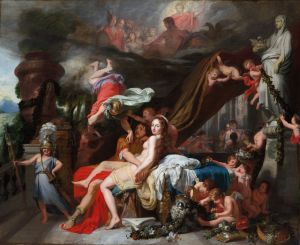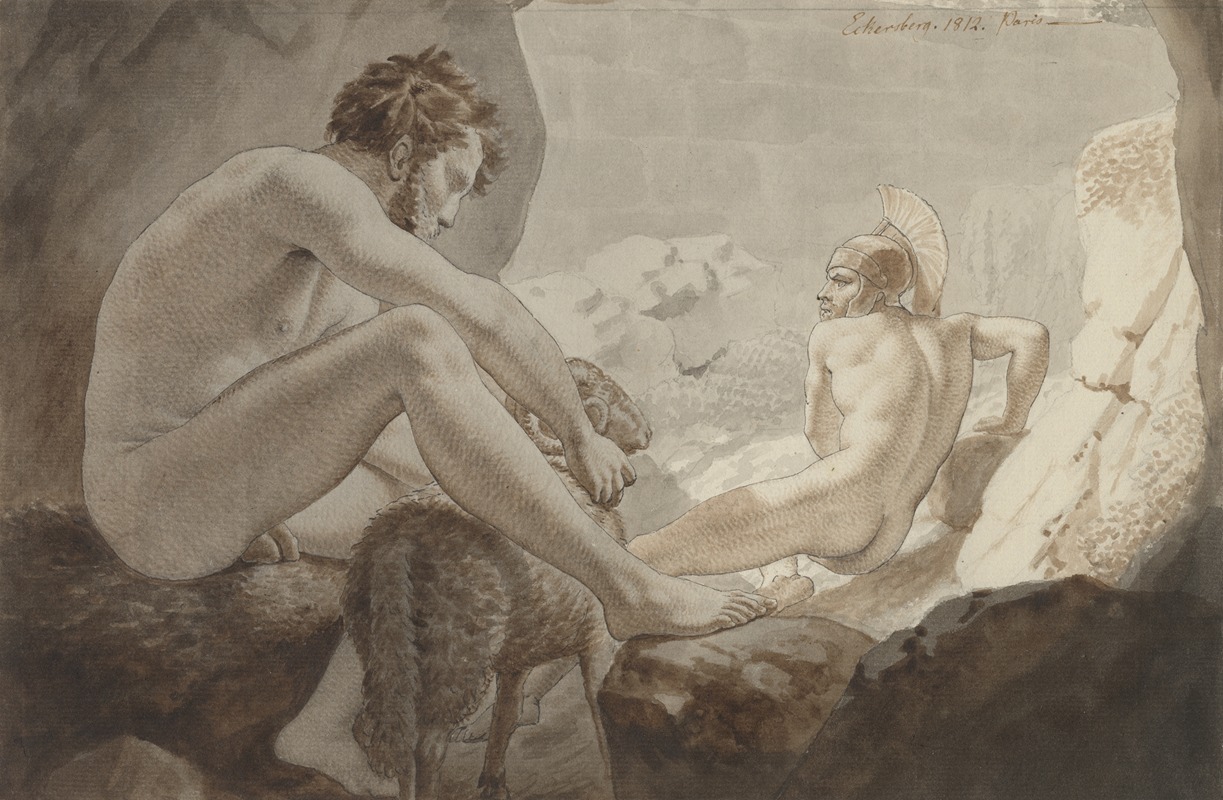
Odysseus flygter fra Polyfem
A hand-painted replica of Christoffer Wilhelm Eckersberg’s masterpiece Odysseus flygter fra Polyfem, meticulously crafted by professional artists to capture the true essence of the original. Each piece is created with museum-quality canvas and rare mineral pigments, carefully painted by experienced artists with delicate brushstrokes and rich, layered colors to perfectly recreate the texture of the original artwork. Unlike machine-printed reproductions, this hand-painted version brings the painting to life, infused with the artist’s emotions and skill in every stroke. Whether for personal collection or home decoration, it instantly elevates the artistic atmosphere of any space.
Christoffer Wilhelm Eckersberg's painting Odysseus flygter fra Polyfem (translated as Odysseus Escaping from Polyphemus) is a work by the Danish artist, often referred to as the "father of Danish painting." Eckersberg, a central figure in the Danish Golden Age, completed this painting in 1812 during his time in Paris, where he studied under the French neoclassical painter Jacques-Louis David. The painting is an example of Eckersberg's mastery of neoclassical style and his ability to depict dramatic scenes from classical mythology with clarity and precision.
The painting illustrates a scene from Homer's Odyssey, one of the foundational texts of Western literature. In this particular episode, Odysseus and his men are escaping from the cave of the Cyclops Polyphemus. After blinding the giant with a sharpened stake, Odysseus devises a clever plan to escape by clinging to the undersides of Polyphemus's sheep as they are let out to graze. The painting captures the tension and ingenuity of this moment, emphasizing the heroism and resourcefulness of Odysseus.
Eckersberg's composition is carefully structured, with a focus on the human figures and their interaction with the environment. The artist employs a neoclassical approach, characterized by clear lines, balanced proportions, and a restrained color palette. The figures are rendered with anatomical precision, reflecting Eckersberg's training and his attention to detail. The dramatic lighting enhances the sense of danger and urgency, drawing the viewer's attention to the central action.
This painting is significant not only for its artistic qualities but also for its role in Eckersberg's development as an artist. It demonstrates his ability to adapt classical themes to his own style while incorporating the influence of his studies in Paris. The work also reflects the broader cultural interest in classical antiquity during the early 19th century, a period when artists and intellectuals across Europe were inspired by the ideals and stories of ancient Greece and Rome.
Today, Odysseus flygter fra Polyfem is considered an important example of Eckersberg's early work and a testament to his contribution to Danish art. The painting is housed in the collection of the National Gallery of Denmark (Statens Museum for Kunst) in Copenhagen, where it continues to be appreciated for its artistic and historical significance.





